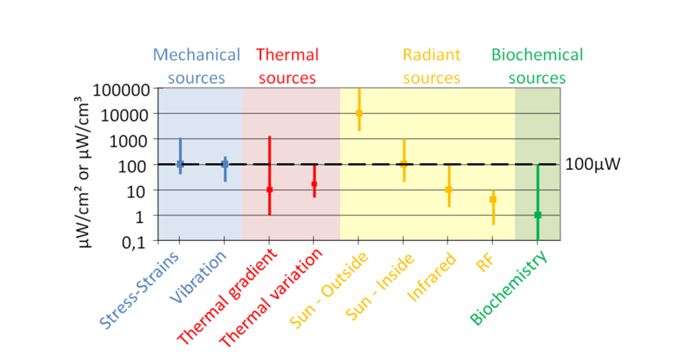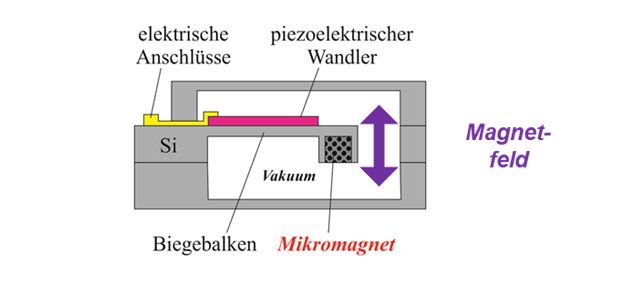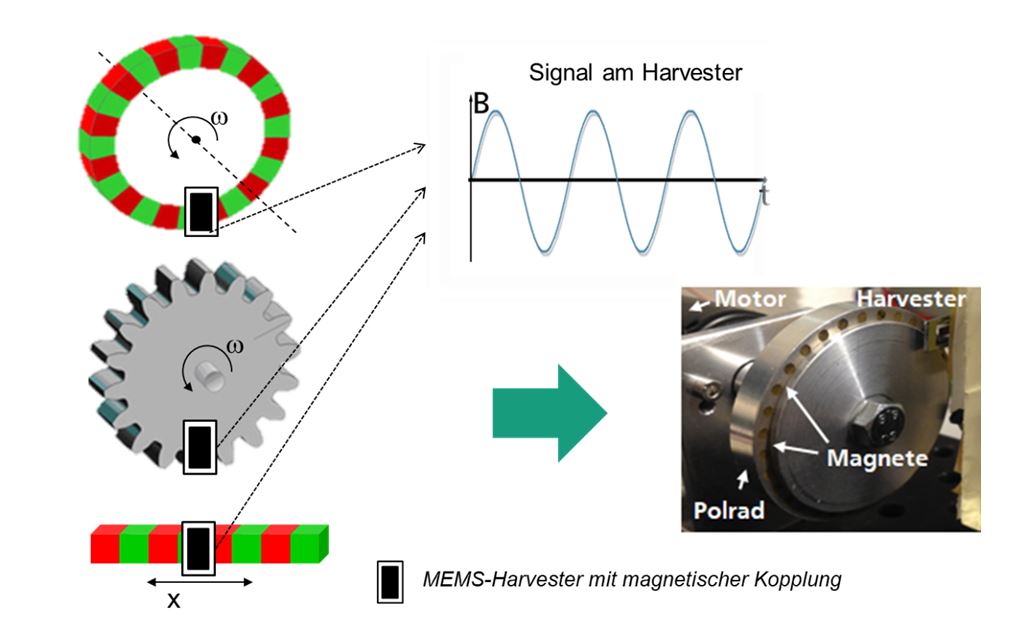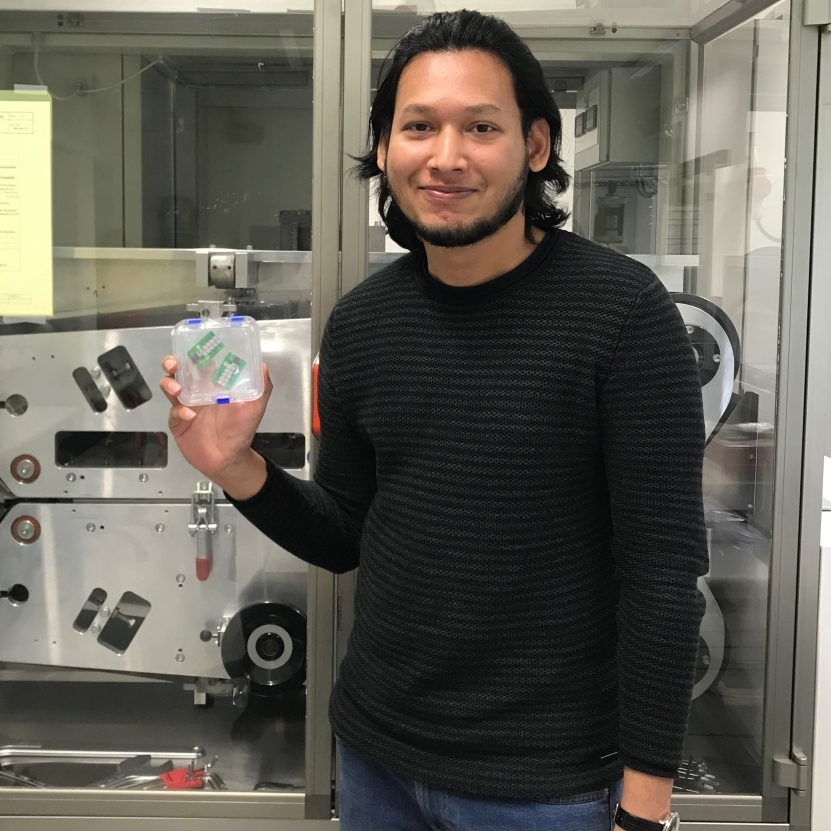Dr. Björn Gojdka & Sven Grünzig
Harvesting energy for green microelectronics
Eight billion devices were connected to the Internet of Things by the end of 2019, without PCs, laptops or smartphones. And the trend is rising sharply: By 2025, the figure is expected to be 20 billion. "A major challenge that lies ahead of us in the next 20 years is to reduce the energy consumption of the Internet of Things by designing devices that use every conceivable source of energy such as vibration, heat and light," sums up the expert Professor Dauskardt from Stanford University. In addition to the Internet of Things, there are many other applications where devices have to work autonomot wearables. Harvesting" energy from light with solar cells has long been common practice on a large scale. If the light falls directly into an outdoor environment, this is also an excellent source of energy, as the diagram shows. But in other application environments without direct sunlight, other sources such as mechanical vibrations or electromagnetic radiation must be tapped to supply microcomponents with energy or to wake them up from a loss-free stand-by (zero power stand-by). usly, for example in medical technology or smarHarvesting" energy from light with solar cells has long been common practice on a large scale. If the light falls directly into an outdoor environment, this is also an excellent source of energy, as the diagram shows. But in other application environments without direct sunlight, other sources such as mechanical vibrations or electromagnetic radiation must be tapped to supply microcomponents with energy or to wake them up from a loss-free stand-by (zero power stand-by).




Within the Fraunhofer lead project ZePowEl (Towards Zero-Power Electronics), MEMS energy harvesters for the piezoelectric conversion of magnetically coupled mechanical energy are being developed at ISIT. ISIT's patented PowderMEMS technology allows for the first time the integration of three-dimensional micromagnets at wafer level. The permanent magnets made of neodymium-iron-boron enable contact-free and long-range force coupling with a high energy yield in a compact energy harvester. The MEMS harvester design allows mechanical excitation even at low vibration frequencies. In addition, the device is lead-free, since aluminum nitride (AlN) and aluminum scandium nitride (AlScN) are used as piezoelectric materials.
Thanks to magnetic excitation, the harvester can use both rotary and linear movements to harvest mechanical energy. Using the measurement setup shown, the harvesters are operated and characterized for rotary motion at their resonant frequency. In resonance of several hundred Hertz the harvester generates a power of up to 120 µW, but also low-frequency excitations of 30 Hz could already be used.
In addition to harvesting energy to operate microcomponents, the power-free stand-by of electronics is also an important issue on the way to green microelectronics. Sensor nodes often only need to collect, process or transmit data for specific occasions. The harvester can serve as a wake-up receiver that wakes the electronics from a deep sleep with a voltage signal when needed. The contact-free magnetic force coupling allows to use numerous mechanical or electromagnetic events as wake-up events.

A further increase in performance of the device is possible by optimally adapting the magnetic excitation and MEMS design to specific applications. In addition, the significantly better piezoelectric properties of AlScN will further enhance the performance of the device. The Internet of Things can continue to grow - we make it green.
 Fraunhofer Institute for Silicon Technology
Fraunhofer Institute for Silicon Technology